Decoupling analysis shows emissions have a dissociating trend from aquaculture’s economic growth, with large regional differences
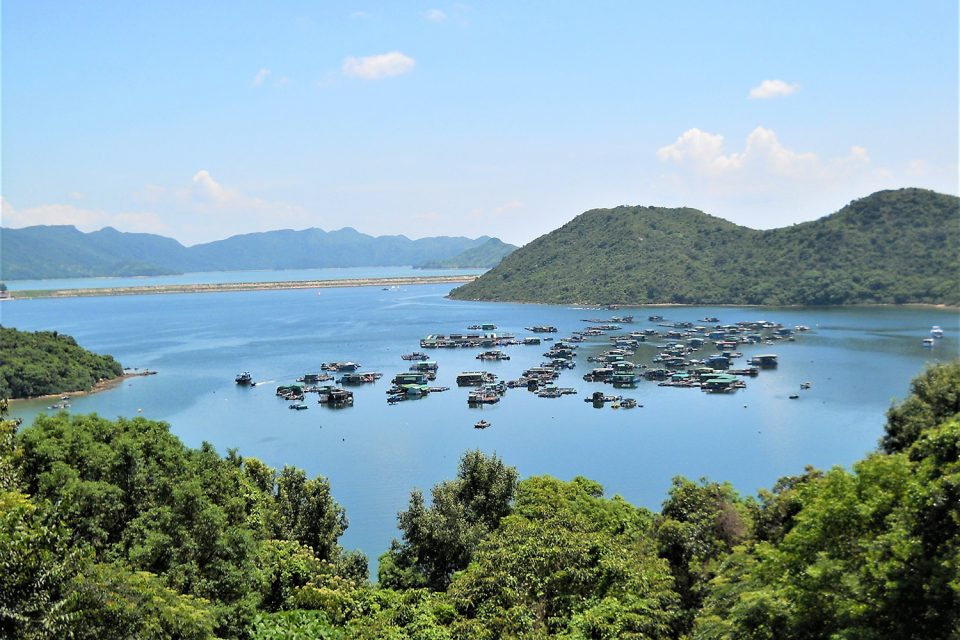
With the world’s largest aquaculture area and production, aquaculture in China is increasingly becoming an important part of the marine economy. The decoupling of carbon emissions and the economy is fundamental to the sustainable development of marine aquaculture. Unplanned offshore aquaculture not only exceeds the carrying capacity of marine ecosystems, but also leads to high carbon emissions caused by the diesel combustion and electricity consumption of fishing vessels in the process of marine aquaculture, which puts pressure on the marine environment and climate change. Therefore, measuring whether economic growth occurs at the expense of environmental damage and judging whether there is a decoupling of economic growth and the carbon emissions of marine aquaculture are urgent issues that need to be solved for sustainable economic development.
On the other hand, more scholars are recognizing the “blue carbon” value (including the economic value and ecological value generated by the carbon sink of marine aquaculture, as this industry has increasingly become a “carbon sink ground.” The comprehensive aquaculture of shellfish, algae and marine pasture is also the process of the absorption, collection, storage and buffering of carbon dioxide (CO2). It has the function of carbon sequestration and is an important part of the carbon cycle. Therefore, in the marine aquaculture industry, the decoupling analysis of carbon emissions and economic growth should consider net carbon emissions instead of the traditional carbon emissions generated by human activities.
This also increases the complexity of the analysis of decoupling influencing factors. Factors related to human production activities and biological carbon sequestration characteristics are all involved – such as the energy intensity, the economic output effect, the size of the aquaculture scale, the reasonability of the aquaculture structure and the level of aquaculture efficiency. When we explore the decoupling relationship between net carbon emissions and economic growth, we should systematically consider many relevant and influencing factors and their contribution degrees. This will help enhance the ecological value of the marine aquaculture carbon sink and provide a better “decarbonization space” for the high-quality, sustainable development of the fishery and marine economy.
This article – adapted and summarized from the original publication (Wang, J., et al. 2022. Decoupling Analysis of Net Carbon Emissions and Economic Growth of Marine Aquaculture. Sustainability 2022, 14(10), 5886) – discusses net carbon emissions and explores its decoupling relationship with the economic growth of marine aquaculture; explores the comprehensive driving effect of carbon emission intensity, economic structure, aquaculture efficiency, aquaculture scale and aquaculture structure on net carbon emissions; and estimates the contributions of aquaculture scale, aquaculture efficiency, carbon emission intensity and aquaculture structure to the decoupling of net carbon emissions from economic growth in different regions of China and provides a basis for further management strategies.
For detailed information on the data collection and literature review; calculations of the carbon emissions and carbon sequestration in marine aquaculture; and all analyses, refer to the original publication.
Net carbon emissions and marine aquaculture
Our study reviewed the decoupling characteristics of net carbon emissions and economic growth for marine aquaculture in China, and estimated the decoupling effort degree in terms of various sea areas, provinces and factors by using the LMDI index decomposition model and decoupling effort index model, widely adopted in energy and emission studies. It also explored the causes of the differences through a redundancy efficiency analysis, which summarizes the linear relations between multiple dependent variables and multiple independent variables.
The relationship between the net carbon emissions and the economic growth of marine aquaculture generally shows a decoupling state (Fig. 1), but the decoupling relationships in different regions are different, which is similar to the findings of Kong, et. al.
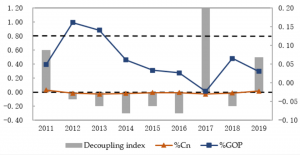
In terms of sea areas, the southern ocean economic zone has the most ideal decoupling state, the trend of eastern ocean economic zone is “decoupling–coupling” while the northern ocean economic zone has the trend of “negative decoupling–decoupling–negative decoupling.” In terms of provinces, Zhejiang, Fujian, Guangdong, and Guangxi are in good decoupling states, while the decoupling status of Shandong continues to deteriorate.
There is a big difference in the total net carbon emissions effects of marine aquaculture in China. In terms of sea areas, the total net carbon emissions effect of the northern ocean economic zone is weaker than those of the eastern and southern ocean economic zones (Fig. 2). In terms of provinces, Fujian and Guangxi have the best total net carbon emissions effects, while Hainan and Jiangsu have the worst total effects (Fig. 3).
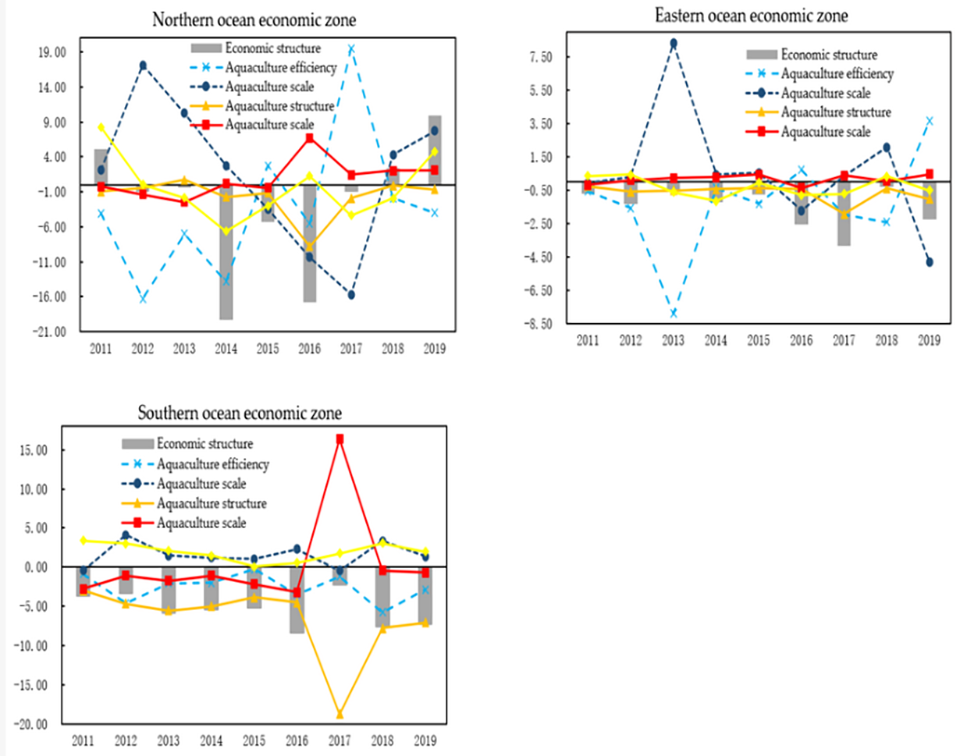
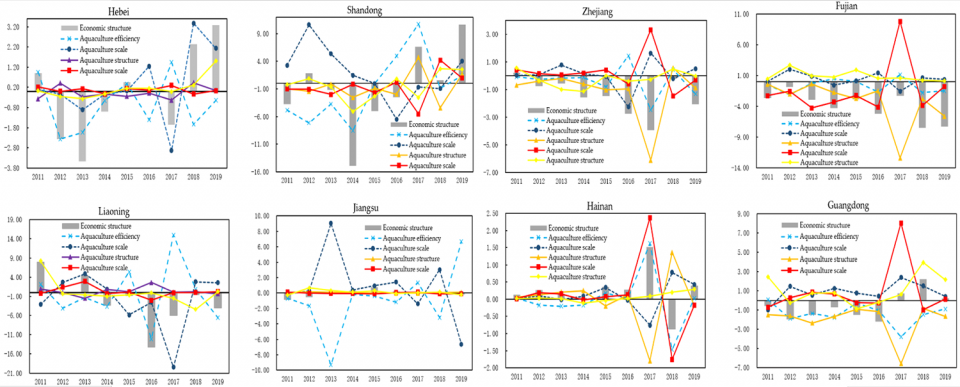
Based on the factors driving the net carbon emissions of marine and aquaculture, carbon emission intensity is the most important driving factor, which is very similar to the results of Wang and Wang. Specific to the coastal areas of China, carbon emission intensity and aquaculture efficiency are the most important factors. In terms of sea areas, the carbon emission intensity and aquaculture efficiency effect are the main factors, and the aquaculture scale effect is also obvious in promoting the southern ocean economic zone. In terms of provinces, carbon emission intensity, aquaculture efficiency, and aquaculture scale effect are the three most important driving factors. The carbon emission intensity effect makes the most significant contribution to the total net carbon emissions effect, and the aquaculture efficiency effect is better than the aquaculture scale effect.
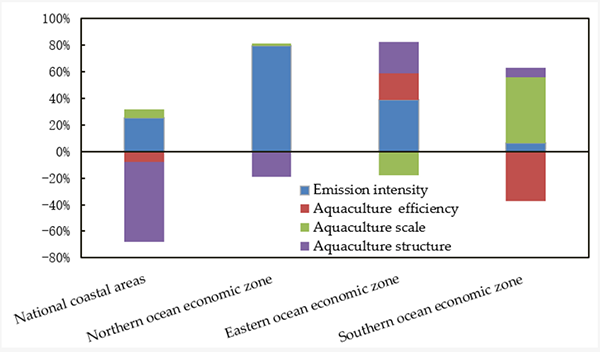
As for the degree of efforts to decouple the net carbon emissions from the economic growth of marine aquaculture, in terms of sea areas, the eastern and southern ocean economic zones make strong decoupling efforts, while the northern ocean economic zone makes weak decoupling efforts. In terms of provinces, Fujian, Guangxi, Hainan, Guangdong, and Liaoning make strong decoupling efforts, while Shandong, Hebei, and Zhejiang make the weakest decoupling efforts. From the decoupling effort index of the net carbon emissions and economic growth of marine aquaculture, the order of efforts of various factors in different sea areas is carbon emission intensity > aquaculture scale > aquaculture structure > aquaculture efficiency (Fig. 4).
Specific strategies proposed to improve marine aquaculture
Strengthen regional cooperation and explore diversified ways to reduce emissions and increase the carbon sink. Because of the spatial correlation between regions, regional synergy should be included to promote an emissions reduction and carbon sink increase in marine aquaculture through diversified means. On the one hand, we should acknowledge the active and leading role of the government and other administrative departments in the formulation of relevant policies and regulations. On the other hand, we can improve the pilot and market-oriented mechanism of carbon exchange trading in the fishery culture and encourage the development of carbon sink enhancement projects to promote the healthy development of the blue carbon industry.
Build a modern three-dimensional aquaculture system and adjust the scale of marine aquaculture according to local conditions. Based on the decoupling contribution degrees of various factors, the aquaculture scale plays an extremely important role. A reasonable aquaculture scale will promote the decoupling of net carbon emissions and economic growth (such as the southern ocean economic zone). China is rich in marine space resources, but there are still many shallow beaches that have not been used. Based on the heterogeneity of geographical locations and marine resources in various provinces, we should combine the local marine ecological-economic-social status, make full use of the advantages and advanced technologies, implement a scale advantage of marine aquaculture with regional characteristics by establishing a modern three-dimensional aquaculture system, and maximize the economic benefits of marine aquaculture.
Effects of aquaculture on China’s marine fisheries over the past 30 years
Vigorously develop green ecological aquaculture and continuously optimize the aquaculture structure. Judging by the contribution degrees of the decoupling efforts in sea areas, the contribution degree of aquaculture structure is insufficient or even reversed (such as the northern ocean economic zone), which may be related to the lack of diversity in marine aquaculture species and the low technical content of aquaculture methods in China. Therefore, we should focus on new models and the extension of deep-sea pastures, increasing the proportion of green ecological aquaculture industries such as leisure fisheries, and continuously optimizing the marine aquaculture structure to promote marine aquaculture, so as to release more blue carbon space while reducing carbon.
Build a modern marine aquaculture economic system and improve aquaculture efficiency. According to the redundancy efficiency analysis results of various factors, the redundant efficiency of the aquaculture area and labor force are the most important factors affecting comprehensive efficiency and the rational use of resource endowment is the key to improving the efficiency of marine aquaculture. Therefore, we should improve the efficiency and carbon sink function of marine aquaculture by building an intelligent marine resource management system and promoting multi-level integrated aquaculture, so as to lay the foundation for the sustainable development of marine aquaculture with high quality, high efficiency and low carbon.
Because of the differences in economic development, technical means, and aquaculture varieties in different regions, the carbon sink coefficient of marine aquaculture may not be the same. A more accurate carbon sink coefficient estimate method based on the formation mechanism will be developed in the future. With the development of marine pastures, more typical marine pastures would be considered to study the green aquaculture model and its environmental and economic effects. These studies will be explored to improve the efficiency of marine aquaculture.
Now that you've reached the end of the article ...
… please consider supporting GSA’s mission to advance responsible seafood practices through education, advocacy and third-party assurances. The Advocate aims to document the evolution of responsible seafood practices and share the expansive knowledge of our vast network of contributors.
By becoming a Global Seafood Alliance member, you’re ensuring that all of the pre-competitive work we do through member benefits, resources and events can continue. Individual membership costs just $50 a year.
Not a GSA member? Join us.
Authors
-
Dr. Hongjun Guan
School of Management Science and Engineering, Shandong University of Finance and Economics, Jinan 250014, China; and Institute of Marine Economy and Management, Shandong University of Finance and Economics, Jinan 250014, China
-
Dr. Zhenzhen Sun
School of Management Science and Engineering, Shandong University of Finance and Economics, Jinan 250014, China
-
Dr. Jingyi Wang
Corresponding author
School of Management Science and Engineering, Shandong University of Finance and Economics, Jinan 250014, China
Tagged With
Related Posts
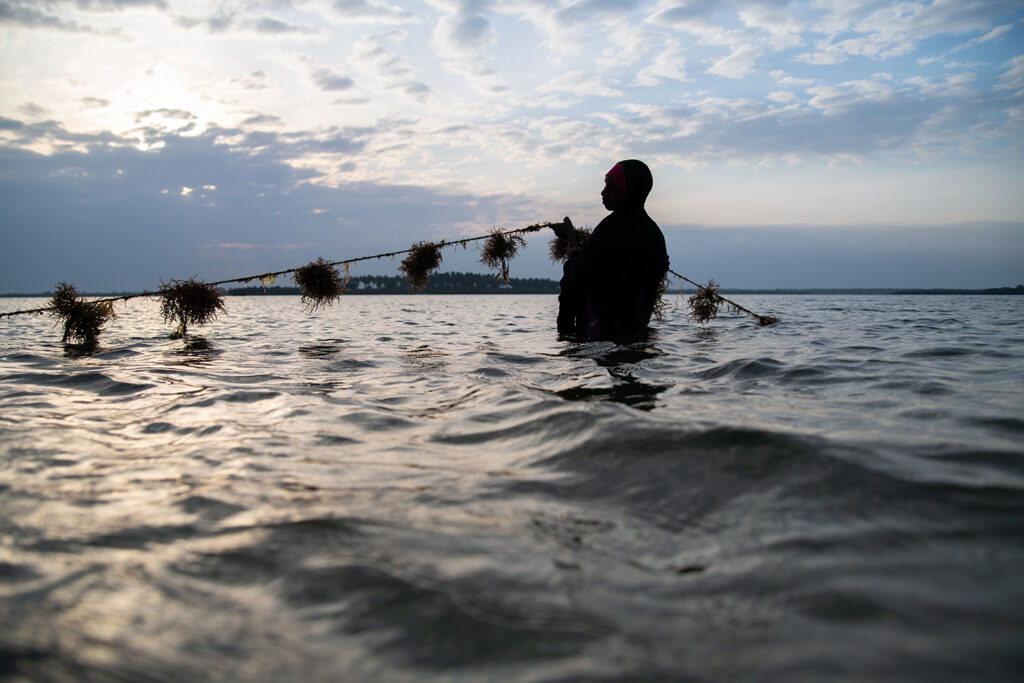
Responsibility
Climate change mitigation needs mariculture, new research concludes
NGO-academic collaborative study finds that mariculture “done right” can aid climate change mitigation by cutting greenhouse gas emissions.
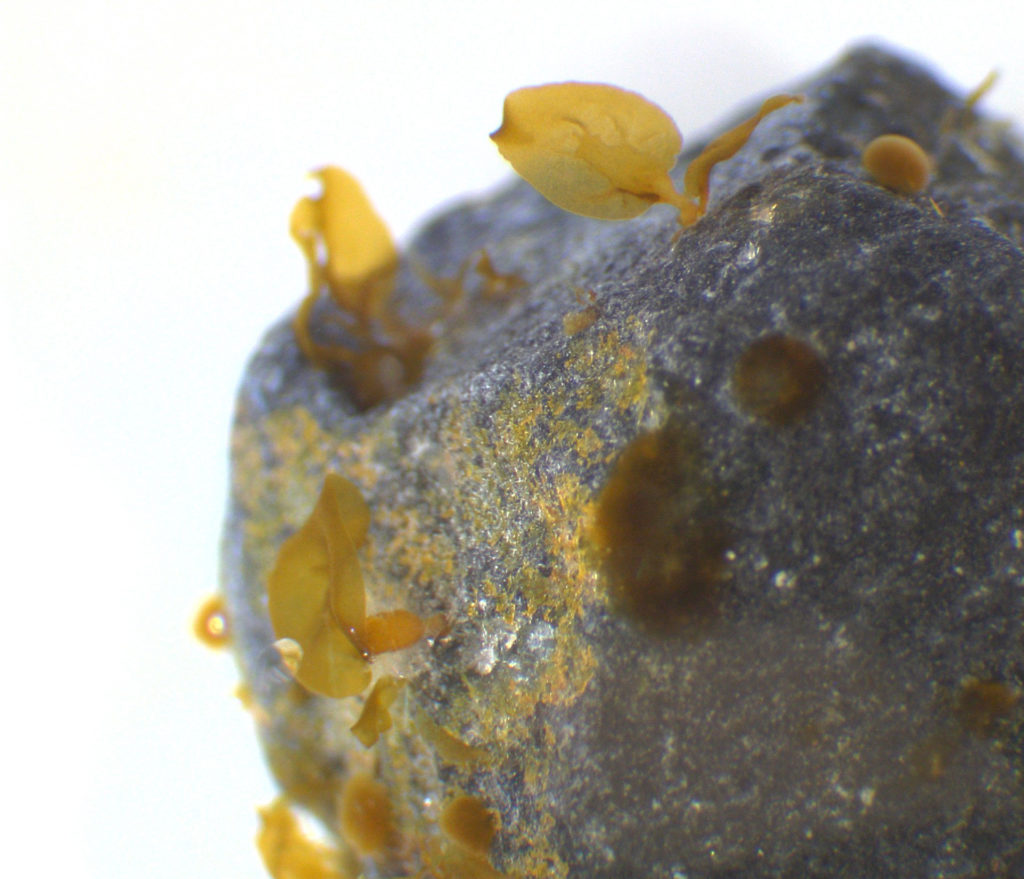
Responsibility
Kelp parachutes: Green gravel reforestation projects showing promise
Researchers are growing kelp seedlings on ‘green gravel’ and then scattering them on the ocean floor, where they’ll hopefully anchor and flourish.

Responsibility
Aquaculture ponds hold carbon
Although 16.6 million metric tons of carbon are annually buried in aquaculture ponds, estimated carbon emissions for culture species have approached several metric tons of carbon per metric ton of aquaculture product.
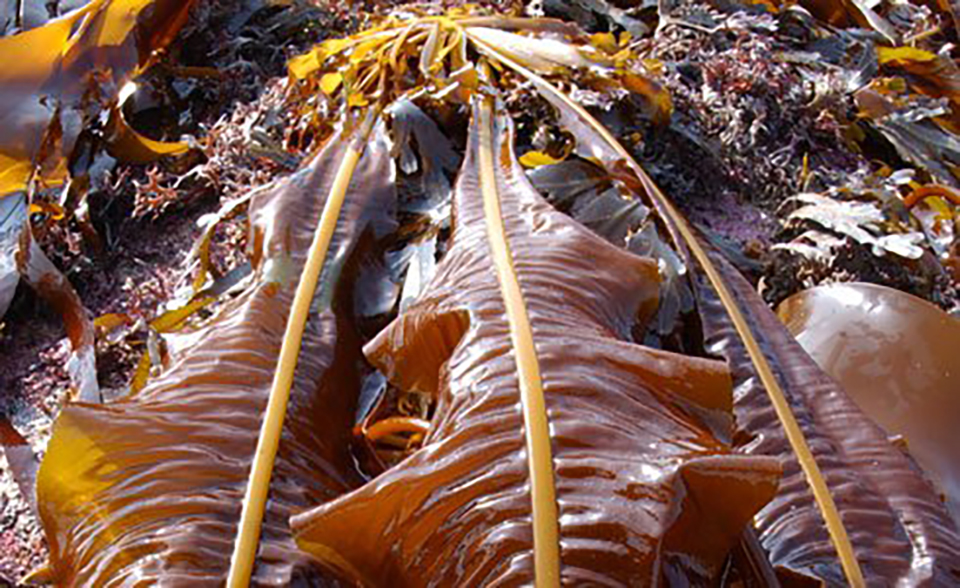
Responsibility
Ocean Rainforest foresees a bright future for ocean plants, and not just in Asia
Faroe Islands company believes nutritious and fast-growing seaweed is a versatile raw material and the oceans’ best defense against climate change.



